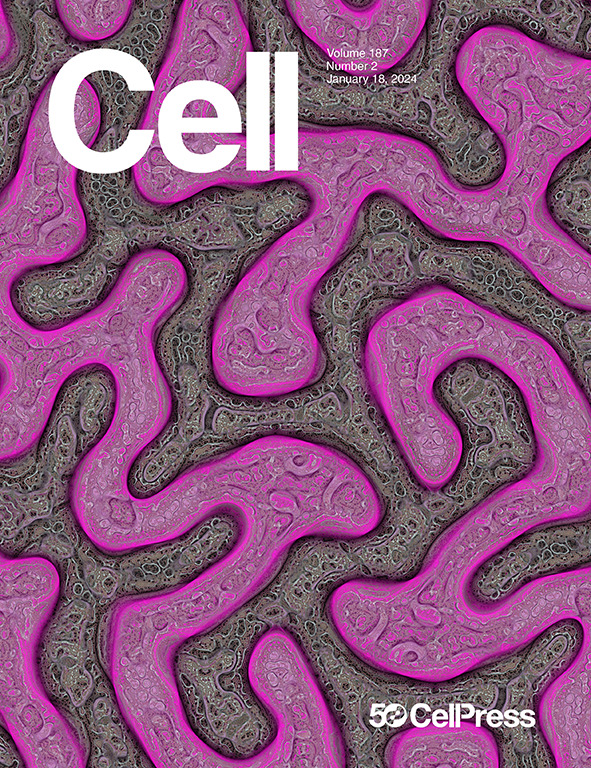小鼠胚胎核组织的建立是由多种表观遗传途径精心策划的
IF 45.5
1区 生物学
Q1 BIOCHEMISTRY & MOLECULAR BIOLOGY
引用次数: 0
摘要
基因组在三维核空间中的折叠是调节所有dna相关过程的基础。基因组与核层相关结构域(lamina-associated domains, LADs)的关联代表了发育过程中核组织的最早特征。在这里,我们在小鼠胚胎中进行了功能获得筛选,以获得机制见解。我们发现,影响组蛋白H3修饰、异染色质和组蛋白含量的扰动对合子和/或2细胞期胚胎核结构的建立至关重要。值得注意的是,一些扰动对受精卵和2细胞期胚胎产生了不同的影响。此外,LADs被破坏的胚胎可以在2细胞阶段重建细胞核结构,这表明在受精卵中初始建立的LADs可能对早期发育是不必要的。我们的发现为染色质和细胞核结构组分之间的功能相互作用提供了有价值的见解,这些相互作用指导了早期发育阶段基因组-膜的相互作用。本文章由计算机程序翻译,如有差异,请以英文原文为准。

The establishment of nuclear organization in mouse embryos is orchestrated by multiple epigenetic pathways
The folding of the genome in the 3D nuclear space is fundamental for regulating all DNA-related processes. The association of the genome with the nuclear lamina into lamina-associated domains (LADs) represents the earliest feature of nuclear organization during development. Here, we performed a gain-of-function screen in mouse embryos to obtain mechanistic insights. We find that perturbations impacting histone H3 modifications, heterochromatin, and histone content are crucial for the establishment of nuclear architecture in zygotes and/or 2-cell-stage embryos. Notably, some perturbations exerted differential effects on zygotes versus 2-cell-stage embryos. Moreover, embryos with disrupted LADs can rebuild nuclear architecture at the 2-cell stage, indicating that the initial establishment of LADs in zygotes might be dispensable for early development. Our findings provide valuable insights into the functional interplay between chromatin and structural components of the nucleus that guide genome-lamina interactions during the earliest developmental stages.
求助全文
通过发布文献求助,成功后即可免费获取论文全文。
去求助
来源期刊

Cell
生物-生化与分子生物学
CiteScore
110.00
自引率
0.80%
发文量
396
审稿时长
2 months
期刊介绍:
Cells is an international, peer-reviewed, open access journal that focuses on cell biology, molecular biology, and biophysics. It is affiliated with several societies, including the Spanish Society for Biochemistry and Molecular Biology (SEBBM), Nordic Autophagy Society (NAS), Spanish Society of Hematology and Hemotherapy (SEHH), and Society for Regenerative Medicine (Russian Federation) (RPO).
The journal publishes research findings of significant importance in various areas of experimental biology, such as cell biology, molecular biology, neuroscience, immunology, virology, microbiology, cancer, human genetics, systems biology, signaling, and disease mechanisms and therapeutics. The primary criterion for considering papers is whether the results contribute to significant conceptual advances or raise thought-provoking questions and hypotheses related to interesting and important biological inquiries.
In addition to primary research articles presented in four formats, Cells also features review and opinion articles in its "leading edge" section, discussing recent research advancements and topics of interest to its wide readership.
 求助内容:
求助内容: 应助结果提醒方式:
应助结果提醒方式:


